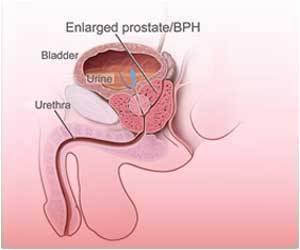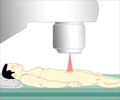Focal therapy was found to be beneficial for men with low-risk prostate cancer, finds study.

None of the nine men treated in the study had a significant side effect. Six months after therapy, seven of the nine patients (78%) no longer had evidence of cancerous tissue in biopsies of the treated area.
"Focal therapy is the male version of a lumpectomy for breast cancer," said study author Scott Eggener, MD, associate professor of surgery at the University of Chicago Medicine. "Rather than removing the entire organ, we are testing this less-invasive way of destroying just the cancer and leaving healthy tissue in place."
"This experimental approach appears to combine the most attractive element of treatment, eradication of the cancer, with the most appealing element of active surveillance, maintaining quality of life," said Aytekin Oto, MD, professor of radiology and chief of abdominal imaging at the University of Chicago Medicine. "These early safety results are promising, but we definitely need longer-term data."
More than 2 million American men have been diagnosed with prostate cancer. Due to prostate specific antigen testing (PSA), most of these cancers are detected early, long before they cause symptoms. Because this cancer occurs primarily in older men, treatment with radiation or surgery is not always necessary as these are man are much more likely to die from another cause than from prostate cancer.
But many healthy men who are relatively young, with a life expectancy greater than 10 years, are not comfortable deferring treatment of a potentially lethal disease. Surgery and radiation can often cure the cancer, but can cause side effects, such as incontinence, impotence and decreased bowel function.
Advertisement
Under MRI guidance, the laser was positioned within the cancer and used to heat the area to a temperature that would kill cancer cells. The team checked the temperatures outside the treatment region every five seconds to protect healthy tissue, especially those near critical structures such as the urethra and rectal wall.
Advertisement
No patient had a major complication or a serious adverse effect. Average scores for urinary or sexual function were not significantly different one, three or six months after treatment. No patient had symptoms of rectal wall damage.
Biopsies of the treated areas six months after the procedure found no evidence of prostate cancer in seven of the nine patients (78%). The other two patients had small (2.5 mm and 1 mm) remaining cancers.
These are preliminary results, the authors caution, following a small number of patients for a short time. It will take much longer follow-up, the authors say, to fully evaluate this approach.
Focal laser ablation is the lastest in a series of efforts to target just the cancer cells and preserve normal areas of prostate. It appears to offer "measurable advantages over other ablative therapies for focal prostate treatment, namely that we can visualize our treatment as it is happening," according to the study authors.
Laser-induced heating can destroy cancer cells with little damage beyond the precisely targeted zone. The approach is well suited for prostate tissue and can be carefully watched in real-time with magnetic resonance imaging, which can also monitor the generation and consequences of the heat treatment.
A phase 2 trial of this procedure, sponsored by the National Institutes of Health, is now underway at the University of Chicago Medicine. The physicians hope to enroll 27 patients. Details are available at the NIH's ClinicalTrials.gov website, identifier: NCT01792024.
Source-Eurekalert









![Prostate Specific Antigen [PSA] Prostate Specific Antigen [PSA]](https://www.medindia.net/images/common/patientinfo/120_100/prostate-specific-antigen.jpg)





